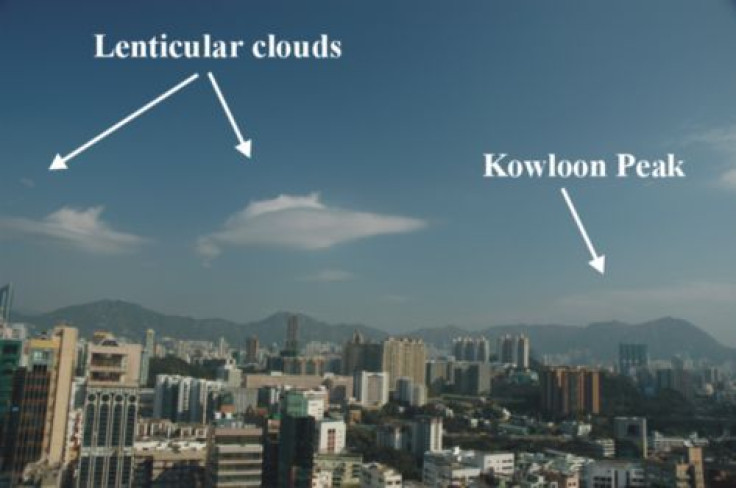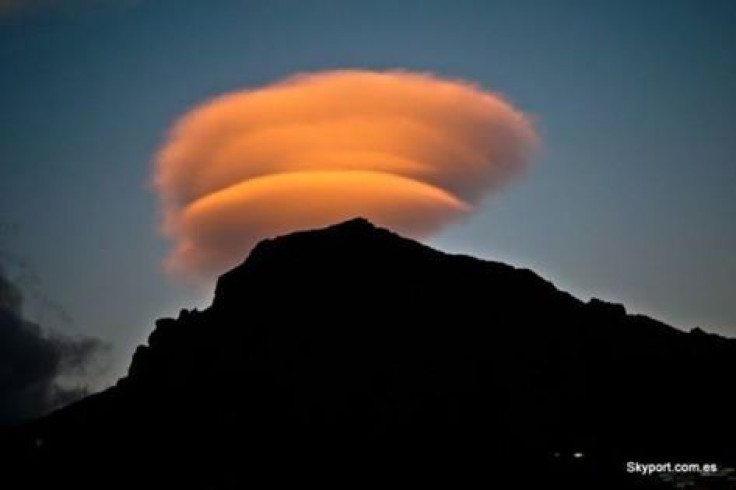Similar alien spacecraft-looking clouds loom over Hong Kong a decade apart

A cloud that looks like an alien spacecraft was recently seen over Hong Kong for three minutes. Local photographer Alfred Lee was fast enough to have taken a shot of the cloud which has a shape similar to Martian spaceship in the movie “War of the Worlds.”
A similar but less dramatic shot was taken by Shun Chi-Ming of the Hong Kong Observatory almost a decade earlier, on Feb 8, 2006. He shot it near the observatory’s headquarters in Tsim Sha Tsui over Kowloon. Shun also describes the clouds as resembling a pair of flying saucers.
Those were actually lenticular clouds, explains Gizmodo. In recent months, similar cloud formations seen in Portugal, Puerto Rico, South America and Russia often spark speculation among residents of grim scenarios. The scenarios painted range from UFOs invading Earth to end-of-the-world thoughts.
Lenticular clouds usually form at high altitudes and are aligned at almost perfect right angles to the wind direction. An iridescent cloud directly behind the lenticular cloud usually adds to the mystery behind the amazing scenery. Water droplets that diffract the incoming sunlight actually provide the rainbow-light of the unique and rare sky show that lasted only a few minutes in the case of the Hong Kong lenticular cloud spotted by Lee.
According to Coconuts Manila, Lee shot the photo at the Ma On Shan Chevalier Garden at around 4 pm on Feb 9. He then submitted the photo to the National Aeronautics and Space Administration which awarded it the Astronomy Photo of the Day.
The Web site EarthSky notes that lenticular clouds that look like UFOs have been spotted in different parts of the world the past few years.

One such photo was taken by Jan Whiteman in 2003 at the Lord Howe Island, a volcanic remnant in the Tasman Sea between Australia and New Zealand. Whiteman called the photo “Pie in the Sky.’ He shared it this March with EarthSky’s Facebook page.
Robert Porto, meanwhile, shot an orange lenticular cloud over Roque del Conde on the vacation island of Tenerife. He submitted the photo to Earthy Sky in June 2015.

Other photos that EarthSky included in a collage taken in Dublin, Iceland, New Mexico, Colorado, Italy, Wales, Chile, Virginia, Nevada and Antarctica show the beauty of nature. EarthSky adds that moist air that flows over a mountain or a range of clouds lead to the formation of the lens-shaped clouds. A drop of temperature at the crest of the wave to the dew point leads to moisture in the air condensing to form lenticular clouds.
Its fast appearance and disappearance is because of moist air moving back down into the trough of the wave, causing the cloud to evaporate back into the vapor. While lenticular clouds are usually unfamiliar to residents of low-lying or flat lands, it could also form in non-mountainous areas because of shear winds created by a front.






